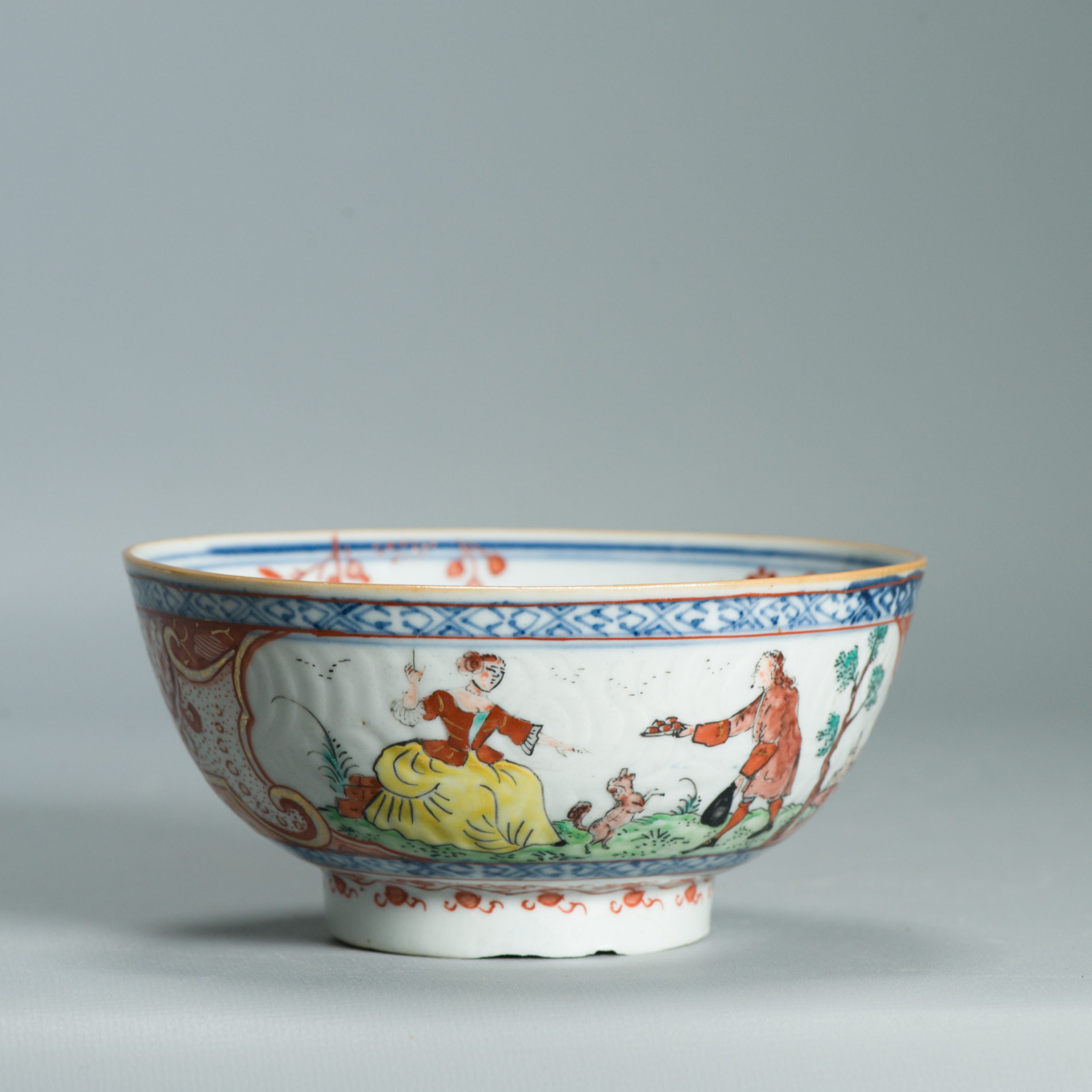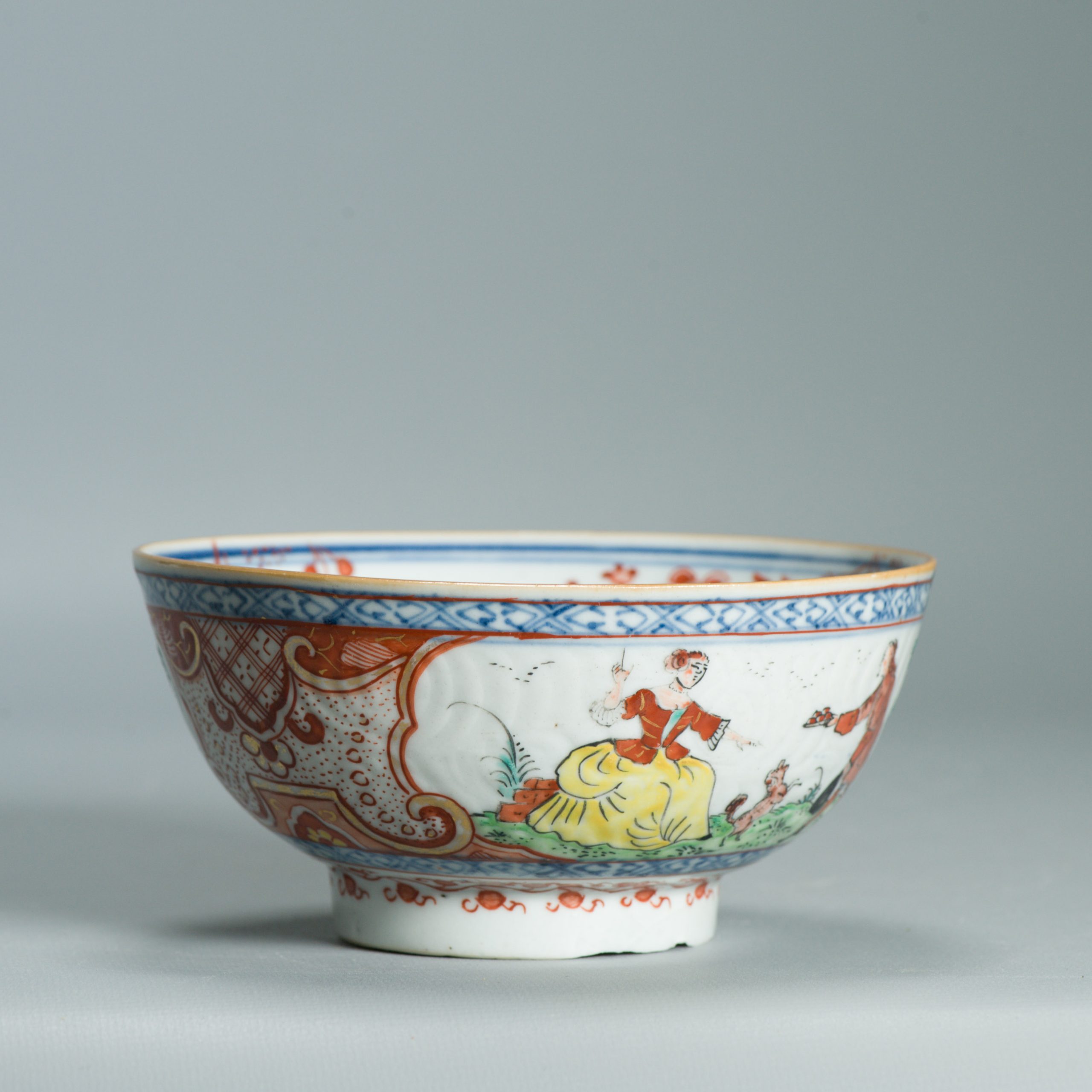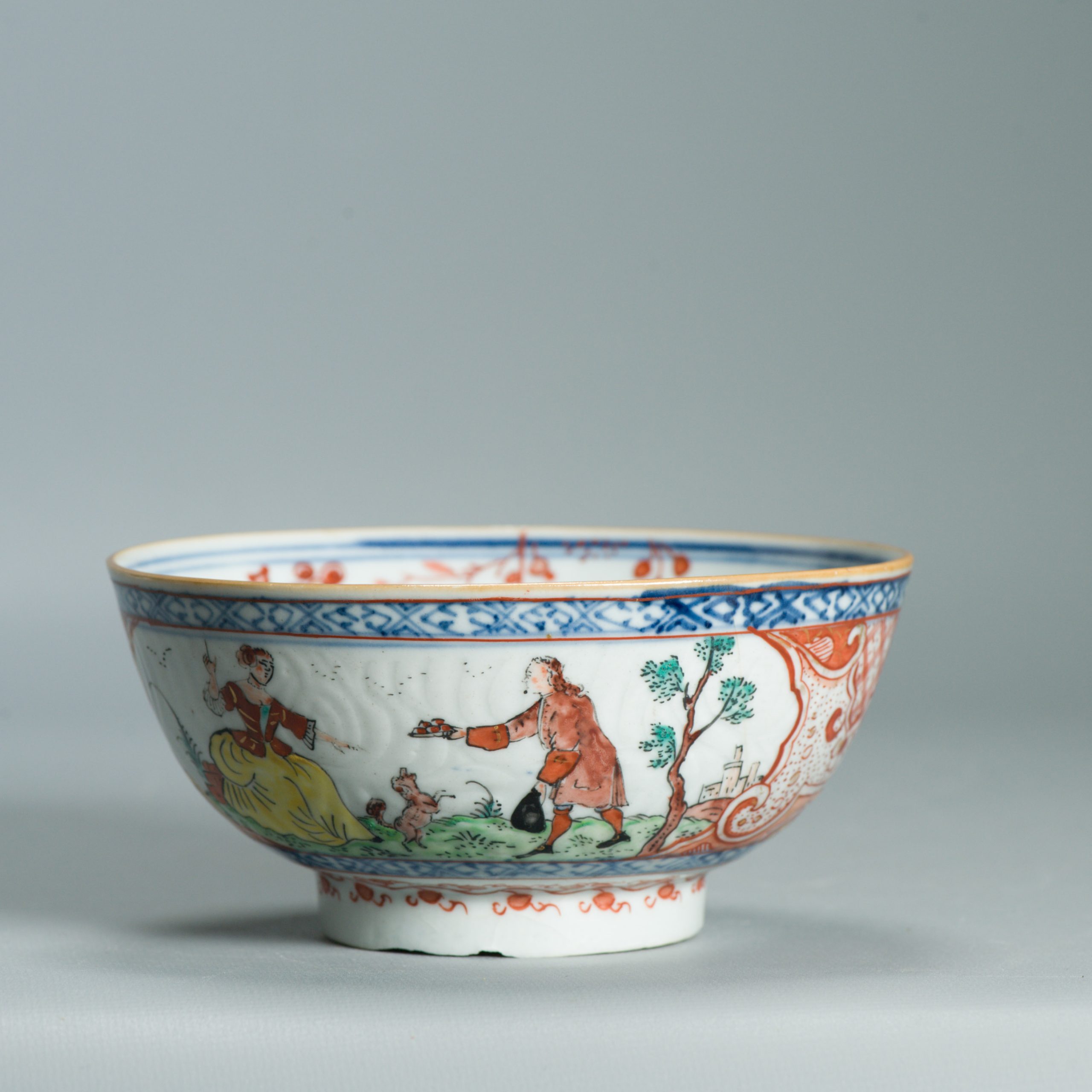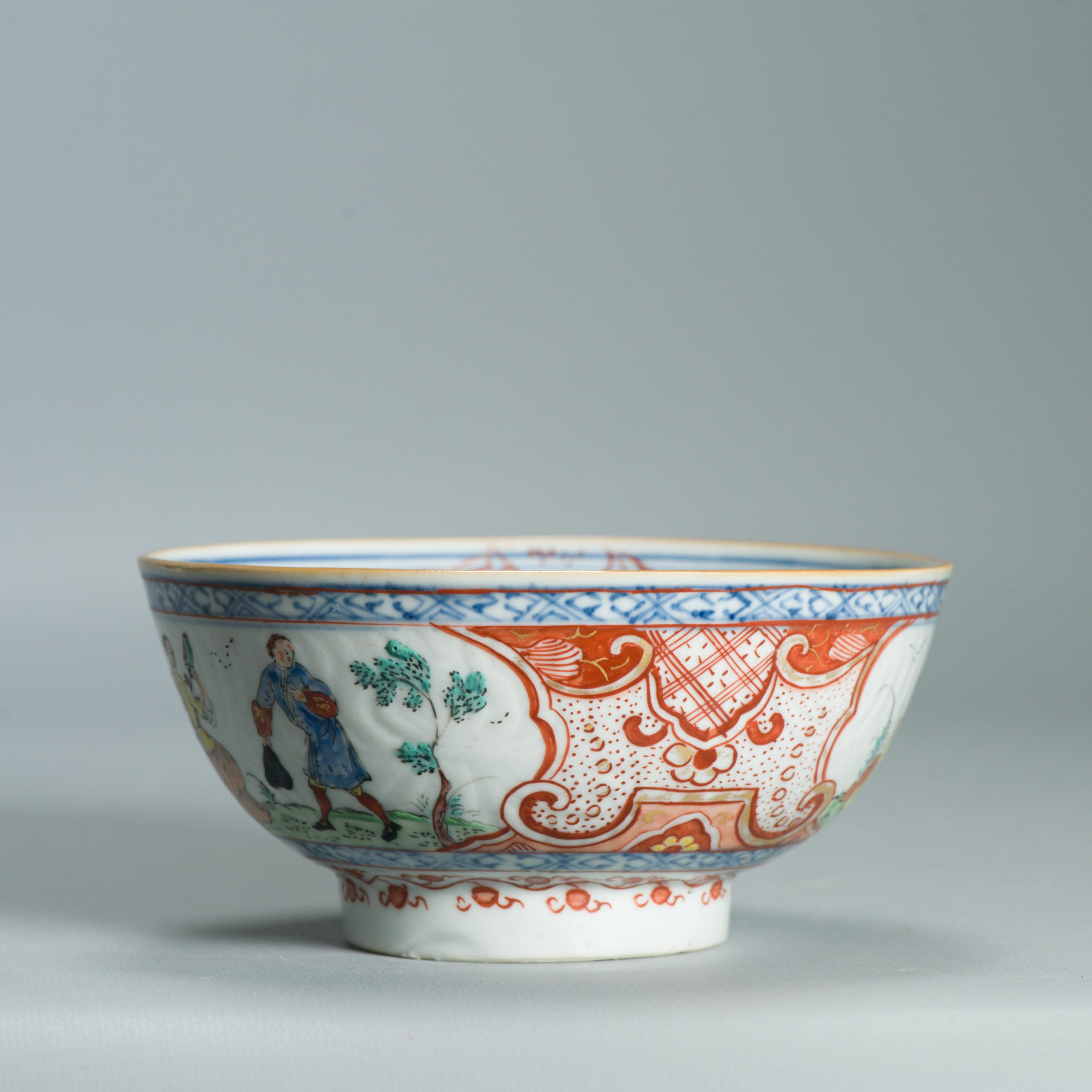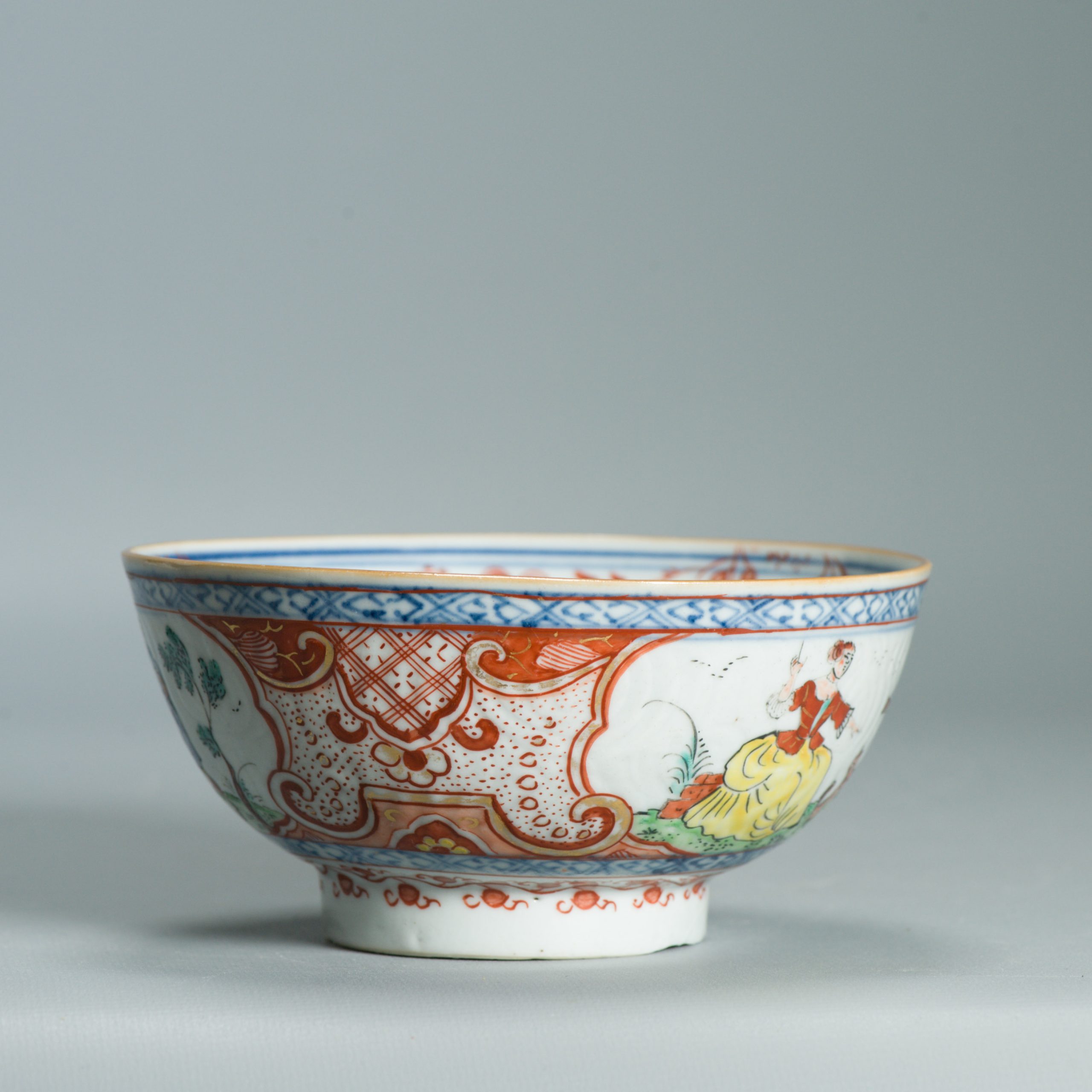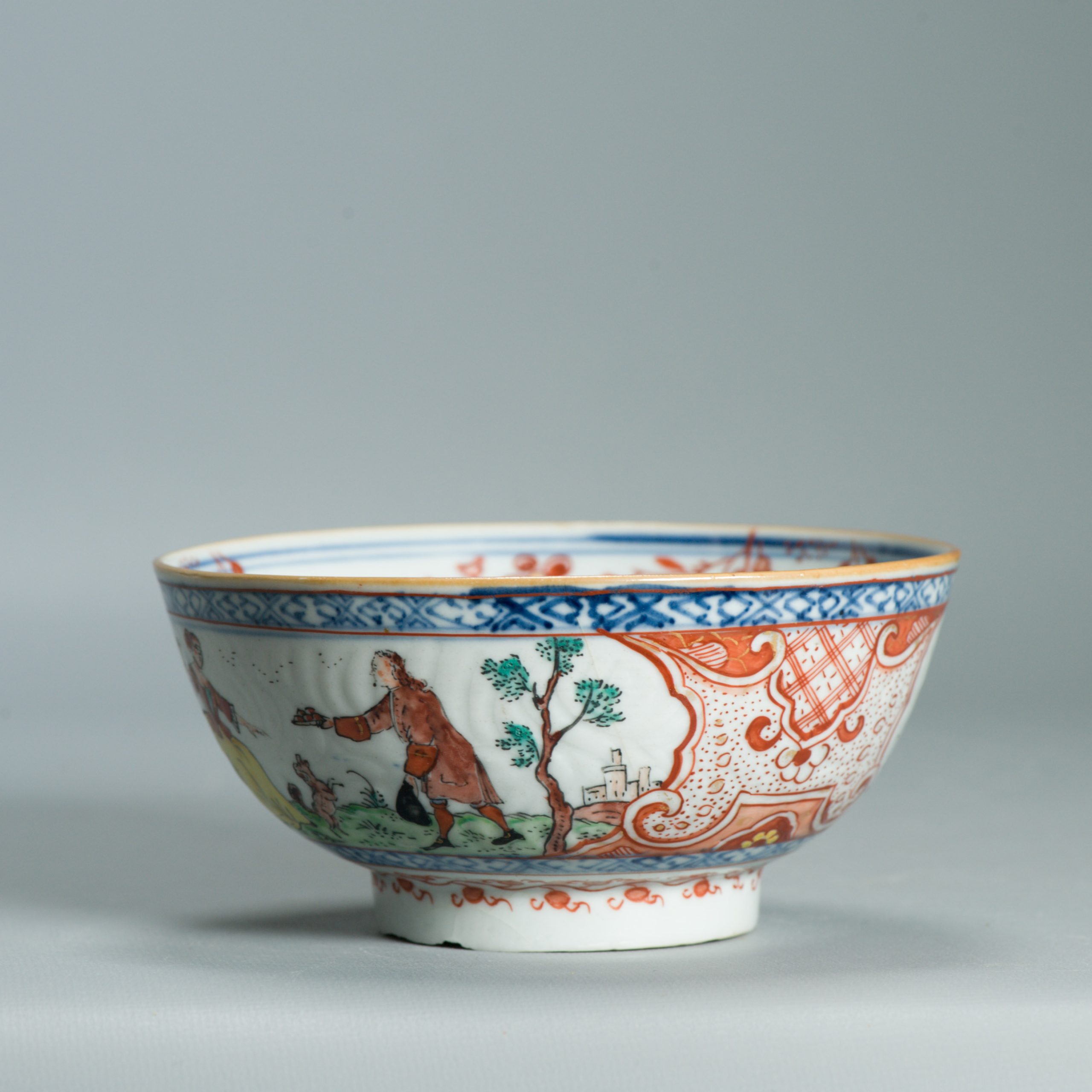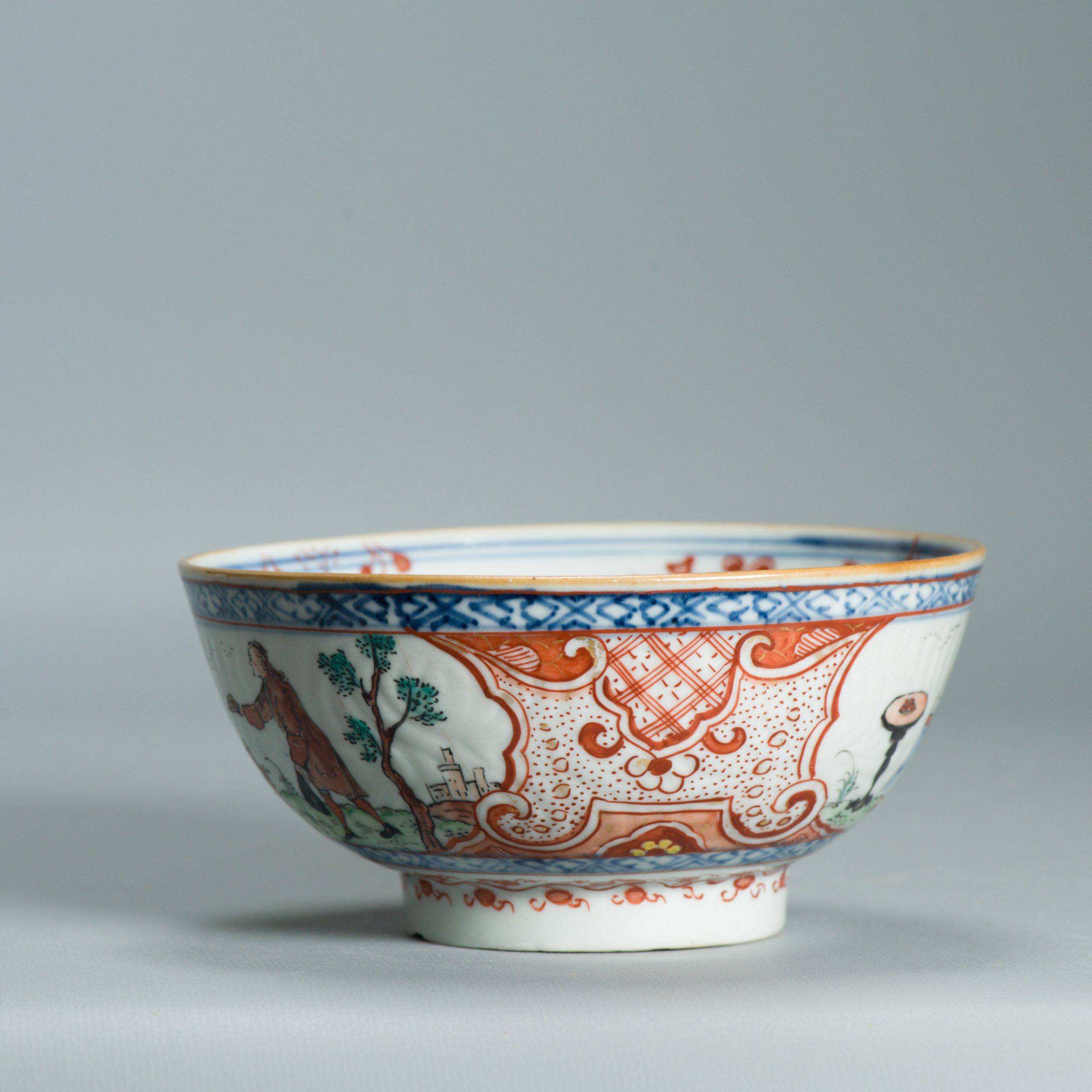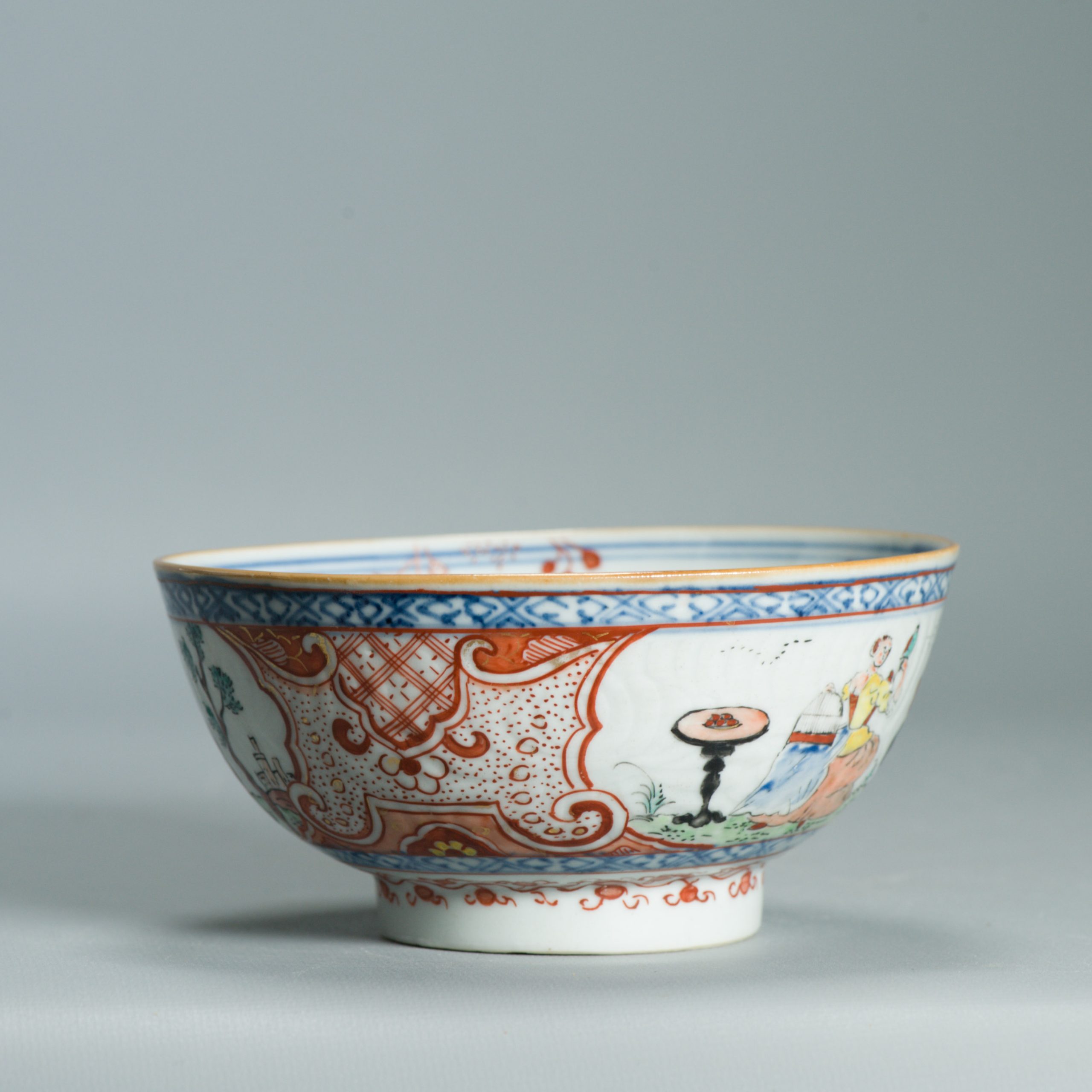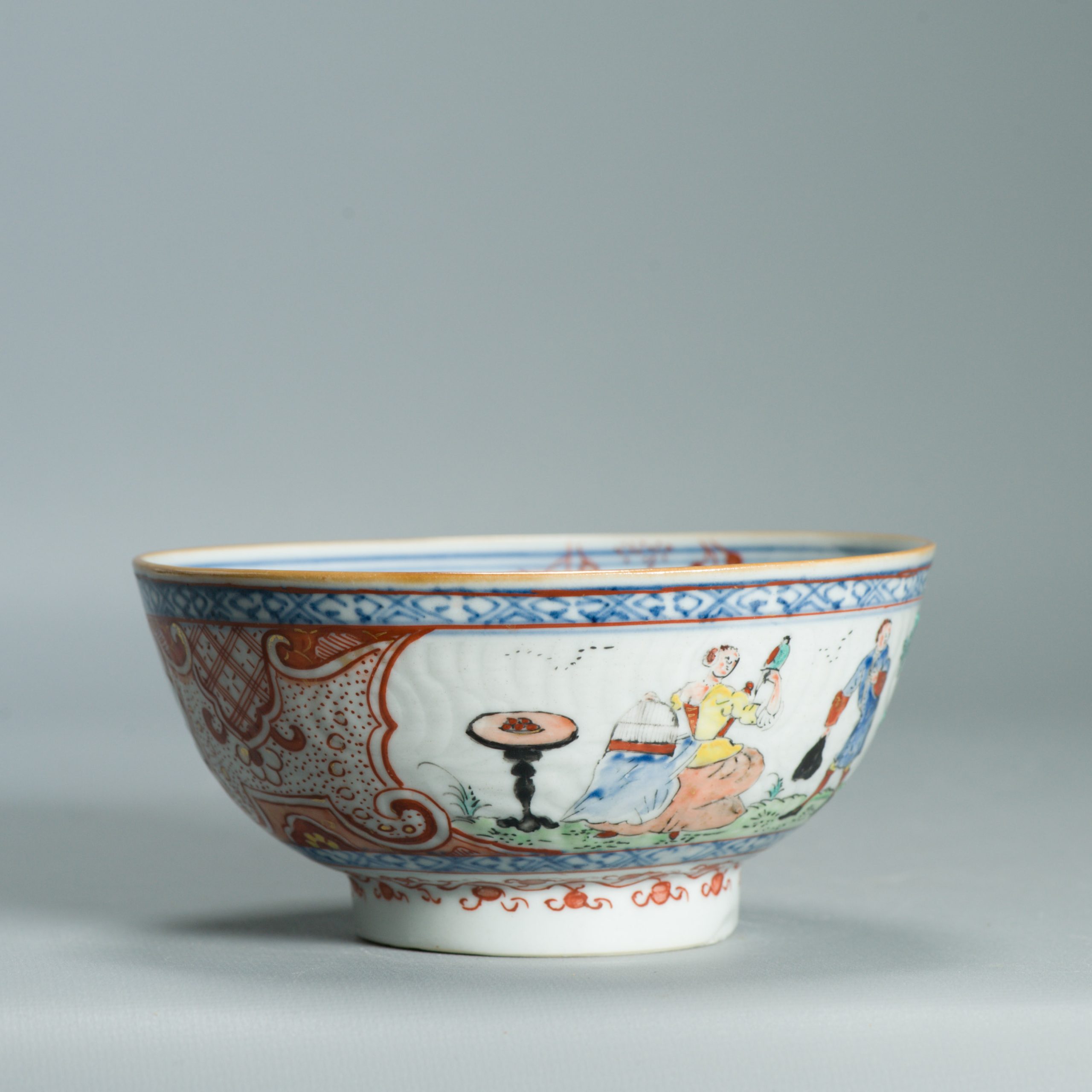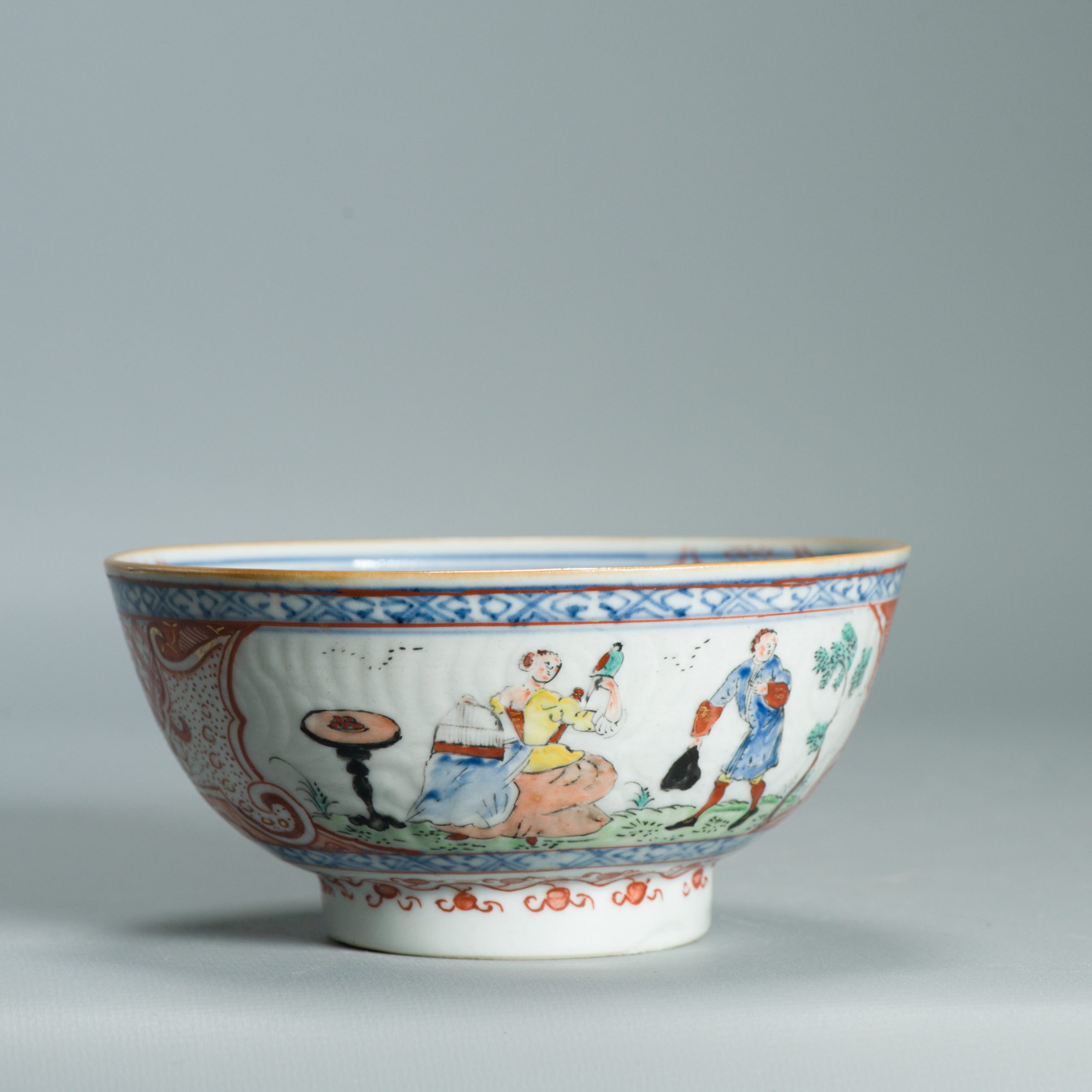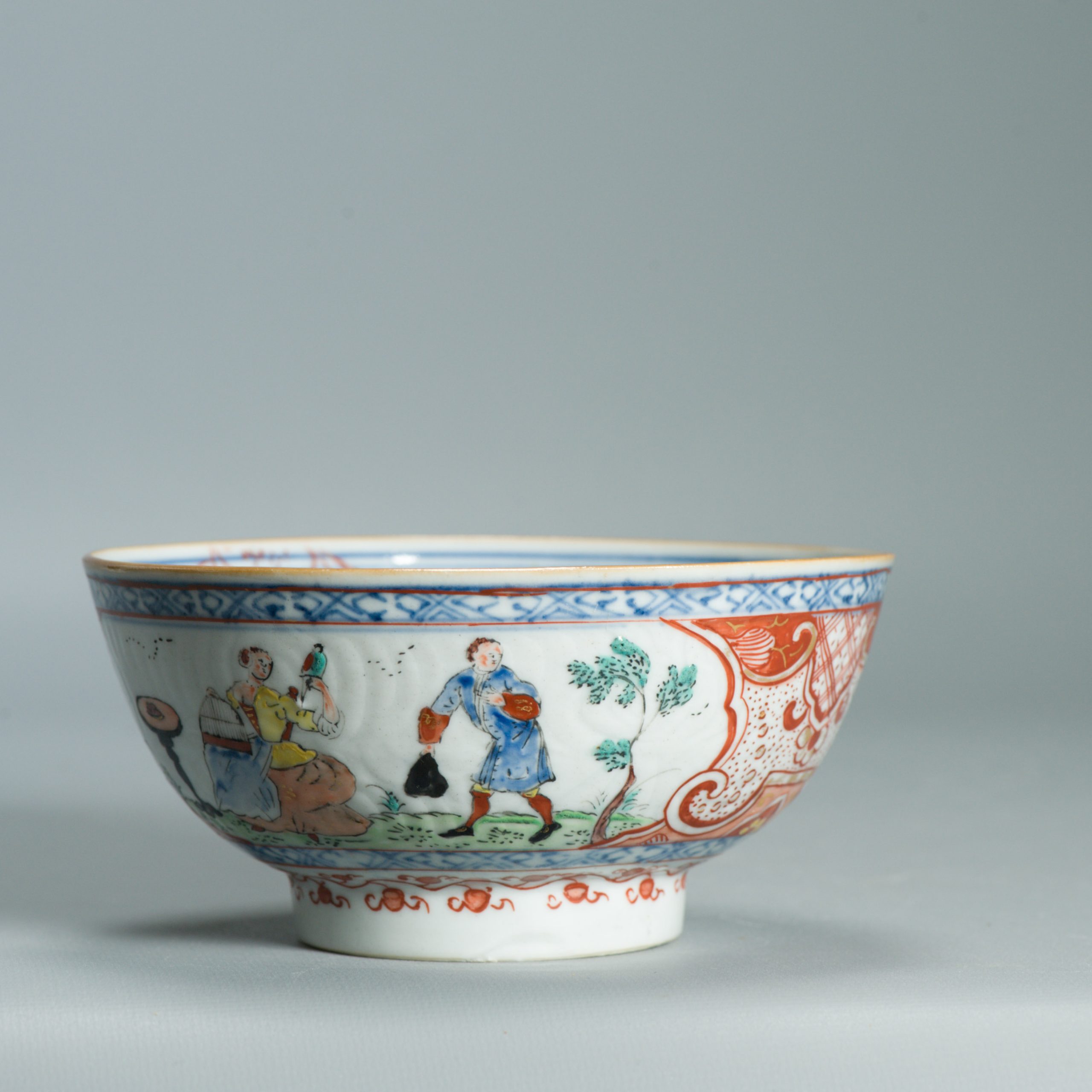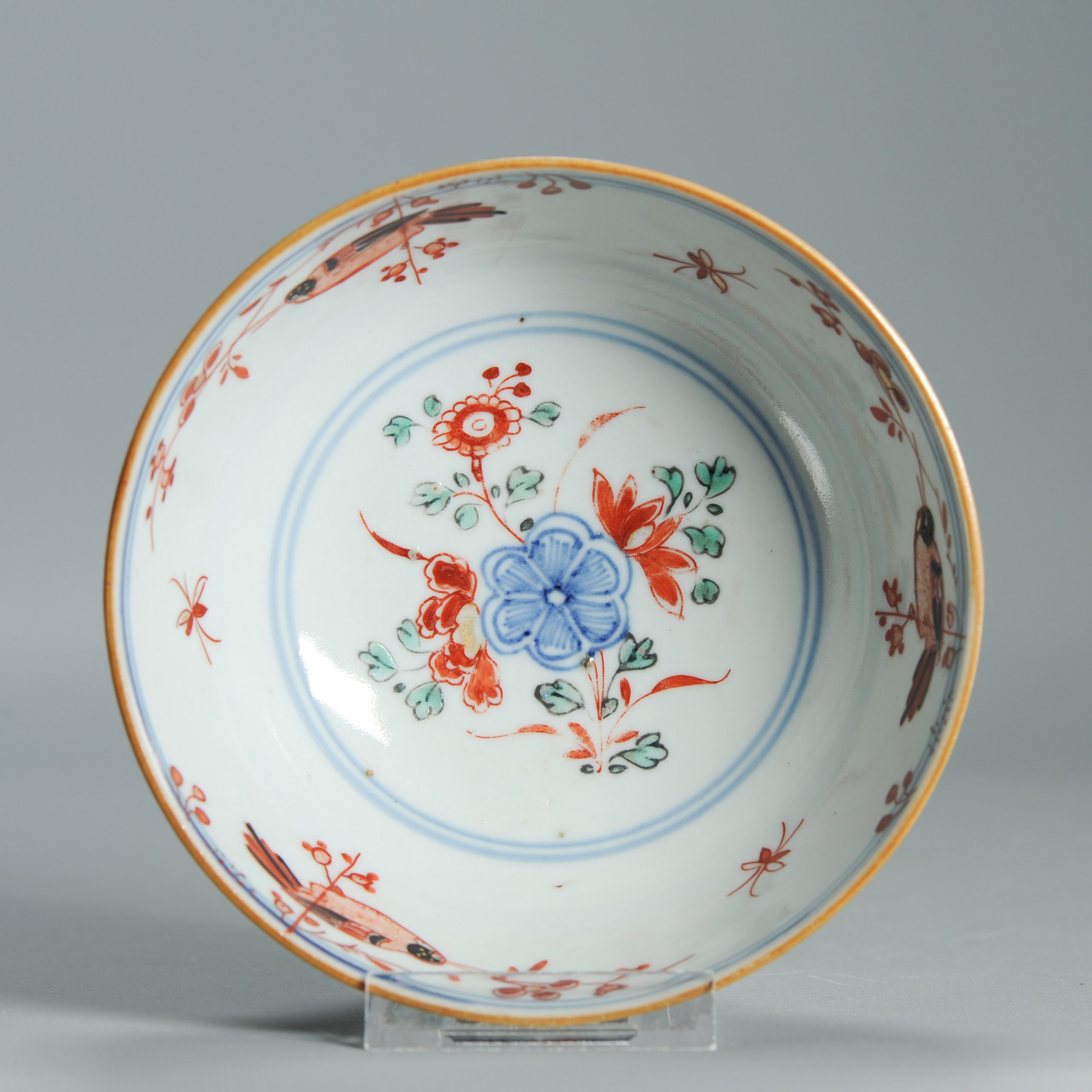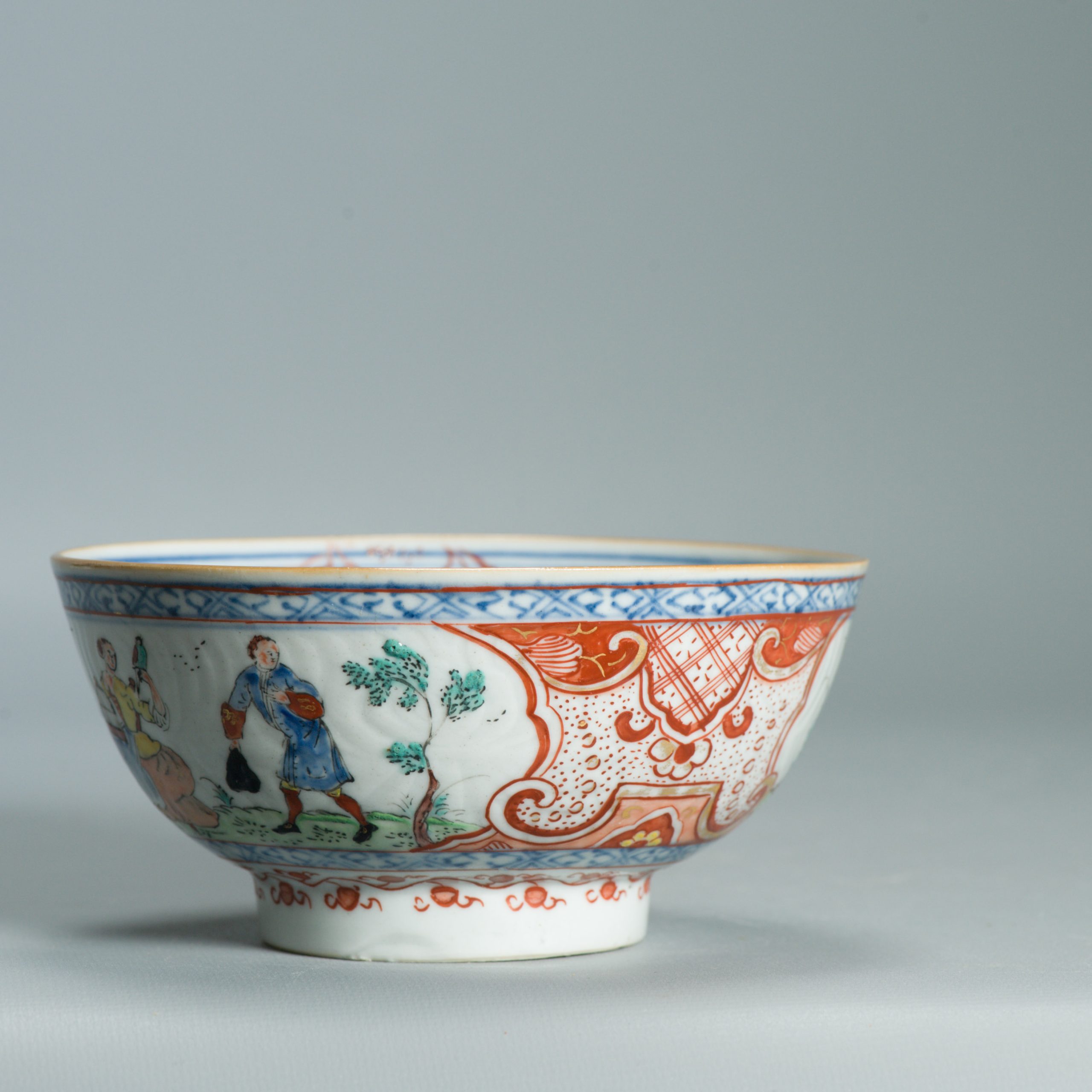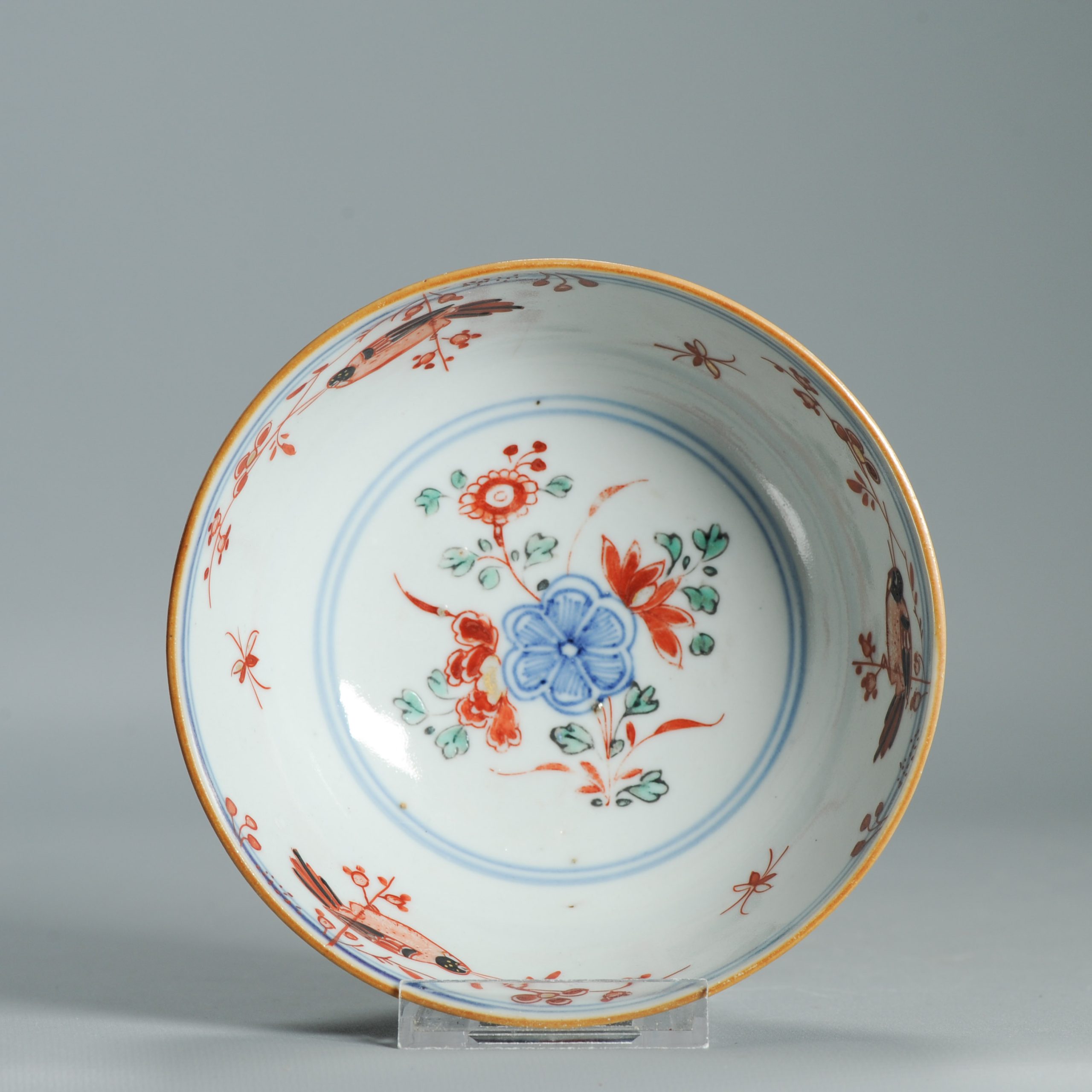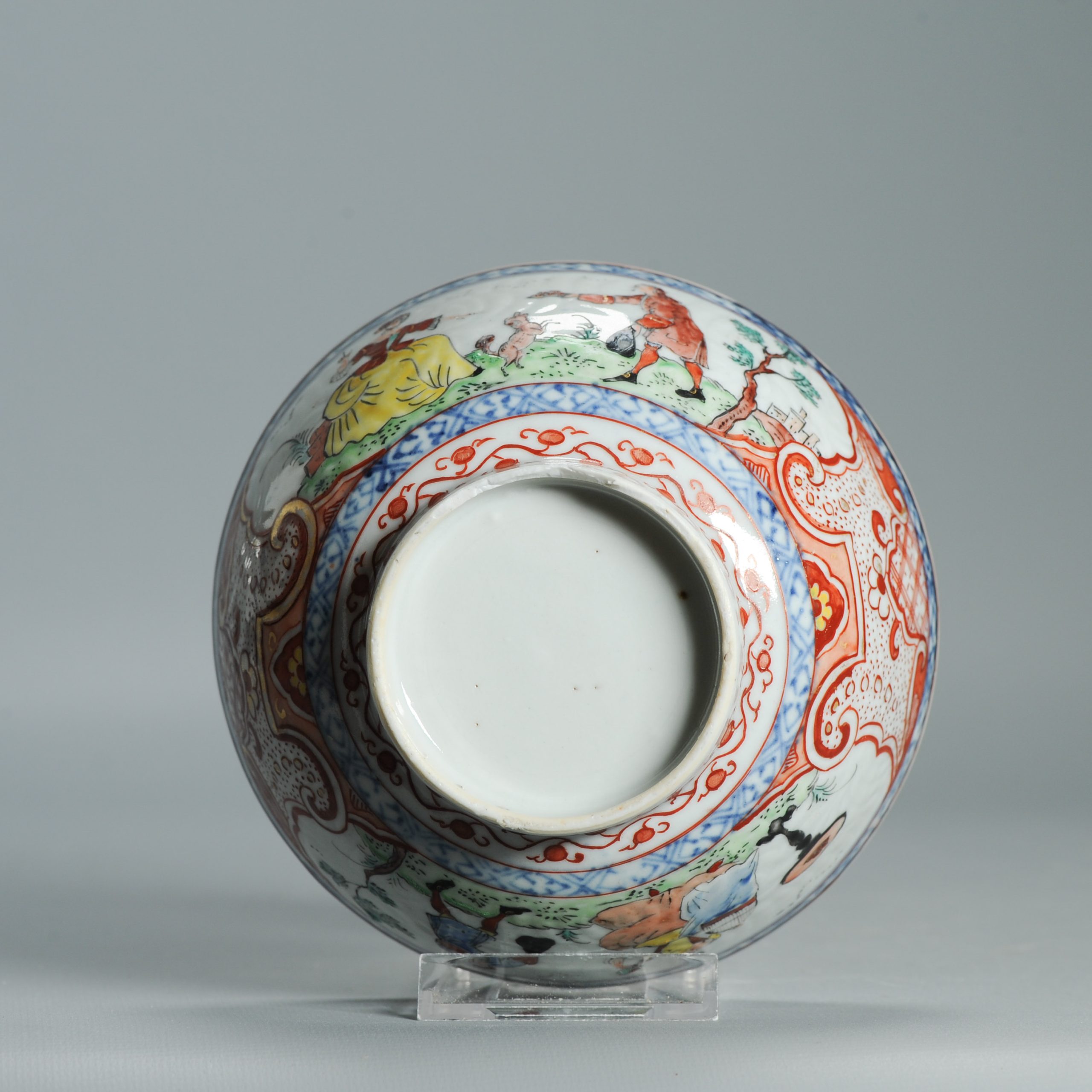1525 Antique Chinese Porcelain Blue and white Anhua Bowl with Pastoral Redecoration
Description:
1525 Antique Chinese Porcelain Blue and white Anhua Bowl with Redecoration
Diameter: 142mm approx
Period:1720-1730
Code: 30Provenance:
– Heritage Auctions
Bizarly enough found in an auction in Holland a few weeks after the purchase of 1524 from the Helen Espir.
Reference:
Espir, Helen. European Decoration on Oriental Porcelain, 1700–1830. London/Lisbon: Jorge Welsh Books, 2005.In 18th-century visual language, these gestures are symbolic:
In the scene with the girl removing the bird from the cage we can find a hidden sexual and armoureus meaning.
When a woman is shown holding a bird that has just been freed from its cage, she is often portrayed as on the brink of — or having just yielded to — love.
If there is a male figure nearby, as in your bowl, his presence reinforces the idea of courtship or seduction.
If he removes his hat or bows, the eroticism is disguised as polite gallantry, in keeping with Rococo taste for refined sensuality rather than explicit passion.Writers and iconographers of the time (and later art historians such as Keyszelitz and de Jongh) point out that in the Dutch 17/18th century the word “vogelen” (“to bird”) itself meant to have sexual intercourse.
So the act of “taking out a bird,” “playing with a bird,” or “letting one escape” could all evoke erotic overtones — subtle, witty, and socially acceptable as long as it was couched in allegory.Underlying erotic allegory: the lady is “liberating” her chastity, acknowledging love or desire, while the man respectfully but expectantly courts her.
The bird’s freedom mirrors the loosening of restraint in love; the hat removed adds the note of formal decorum that makes the scene socially acceptable.
Removing the hat is a sign of respect, politeness, and deference – the man is greeting or honoring the lady.
Offering food or fruit (often apples, grapes, or lemons) represents courtesy, courtship, or affectionate approach.
The dog is a traditional emblem of faithfulness and affection (fides), especially in pastoral or gallant scenes.
Together they form a “scene of gallant love” — the man shows polite devotion to the woman, and the little dog underscores the fidelity and playfulness of their bond.
During the 18th century, under the influence of Rococo art, “pastoral love” became a fashionable theme in painting and decorative arts.
These were not real peasants, but urban fantasies of rustic simplicity — ideals of natural affection and refined manners.The courteous man (in urban dress, not a shepherd) brings an offering, removes his hat respectfully, and is greeted by a woman who responds kindly — a tableau of refined gallantry and mutual interest.
Additional Information
| Type | |
|---|---|
| Region of origin | China |
| China dynasty period | Qing (1661 – 1912) |
| Decoration type colour | Amsterdam Bont |
| Century | 18th century |
| Size | 12cm< |
| Emperor | Yongzheng (1722-1735) |
